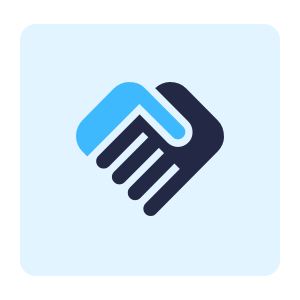I designed ed-tech learning software for thousands of learners living in rural areas with limited-to-no internet connectivity. I traveled to conduct research in those regions, designed for multiple curriculum, and championed UX across four products.
Role: UX Designer
When: 01/2017 - 07/2021
Skills: Figma, Ethnographic User Research, Design Systems, copy-writing, prototypes
Leading on-the-ground user research
Because the platforms help people with limited internet connectivity, it’s hard to get live, in-person product feedback. To really learn how students and teachers use the Kolibri learning software, it was important to be on-the-ground, observing people they engage with the product.
My responsibilities:
Writing and leading classroom observation + research protocols. It was vital to get core learnings on how students and teachers incorporate Kolibri into typical day without interrupting learning.
Interview students, teachers, classroom coaches, software infrastructure teams, and education curriculum experts to understand of pain points in their journeys. It was vital I learn all I can about how administrators were setting up software, what teacher and student goals needed to be addressed, and identify gaps in classroom resources.
Consolidation of research findings into actionable next steps and product design.
Below: conducting classroom research in Guatemala and Rajasthan, India! The goal was to gather insights on how our products are used in instructional settings, computer labs, and classroom programs.
Design across four products.
Kolibri is a learning platform for students, where they can watch and engage with content without the need for internet. It also offers coaching tools for teachers and features for school admins to adjust content to accommodate specific education curriculum.
As a product designer, I’m responsible for:
Conducting user research to uncover user needs and product journeys.
Creating consistent experiences that are grounded in user research and established design principles.
Working with internal stakeholders, project managers, and developers to iterate on and pivot designs.
Advocating for the design team and elevate UX standards across the org.
When design direction is ambiguous, I find it’s helpful to have fall-backs I can refer to. Here are a several principles that help me guide decision-making.
Learners around the world aren’t just children. Experiences can be joyful, intuitive, and cater to the novice, but should not be condescending.
Learning can sometimes feel tiring and/or challenging. Design should never get in the way of the learning experience, and should positively support motivation and engagement.
Simplicity really is key. Language & actions should be concise enough for laymen to understand. Keep in mind the need for internationalization and accessibility.
Marginalized communities understand their own needs best. Our tools should enable them to measure progression and have ownership over their goals .
Additional parts of the UX process I advocate when designing for learners and technical contexts:
Thoroughness in gathering inputs
I spend time sorting out information by talking to stakeholders and looking at patterns in existing research. This helps be more fluid in identifying a problem and developing a hypothesis
Chosing a happy medium
I prototype and ideate between low and high fidelity designs. There’s tons of value in taking my best shot at writing realistic copy, or showing how UI elements are intended to move on a page. More often than not, this helps people understand my intentions better.
Going the extra mile for detail
Designing MVPs are an important part of moving quickly, but it’s also important to weight accessibility compliance, micro-interactions, and joyful design. End-users notice bugs and enjoy pleasing experiences much like anyone else.
Below: Products I’ve worked on. Everything from on-boarding flows, to teacher dashboards, to school administrator panels.
Jump-starting the design system
Problem:
Design was a team of two and design consistency was weakening across our product suite given the fast pace of feature dev. Designers + developers started creating custom UI in order to keep up with fast shipment of features. Products experiences looked and behaved in different ways, frustrating users with unpredictable UI and introduced different software mental models.
Hypothesis:
If we invest efforts into creating a design library…then design and dev have a shared vocabulary to easily collaborate, create more consistent components, and save product development time.
Responsibilities & ownership:
Auditing product experiences across the Kolibri ecosystem for inconsistencies.
Determining usage guideline and drafting examples for all component behaviors.
Visually refreshing dated components, creating new ones.
Drafting guidelines for larger patterns such as page layouts, grids, and navigation systems.
Stewarding communication to the product team and broader org on system updates.
Below: brainstorming sessions, the figma Kolibri design system and its live implementation.
Approach design with curiosity.
I find the UX design process is most effective when approached with an open mind to learn more about a particular problem. Although there’s value in moving quickly to actualize a product vision, it’s important to intentionally slow down when possible, be curious, and listen to the stories users tell.



































